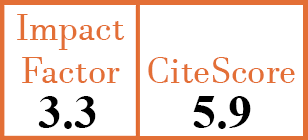Full Papers
Type I and III collagen turnover is increased in axial spondyloarthritis and psoriatic arthritis. Associations with disease activity and diagnostic capacity
N.S. Gudmann1, A.S. Siebuhr2, A.F. Christensen3, L. Ejstrup4, G.L. Sørensen5, A.G. Loft6, M.A. Karsdal7, A.-C. Bay-Jensen8, H.L. Munk9, P. Junker10
- Nordic Bioscience, Biomarkers and Research, Herlev, Denmark. nsg@nordicbioscience.com
- Nordic Bioscience, Biomarkers and Research, Herlev, Denmark.
- Department of Rheumatology, Vejle Hospital, Denmark.
- Department of Rheumatology, Esbjerg Hospital, Denmark.
- Institute of Molecular Medicine, University of Southern Denmark.
- Department of Rheumatology, Vejle Hospital; and Department of Rheumatology, Aarhus University Hospital, Denmark.
- Nordic Bioscience, Biomarkers and Research, Herlev, Denmark.
- Nordic Bioscience, Biomarkers and Research, Herlev, Denmark.
- Department of Rheumatology, Odense University Hospital, Denmark.
- Department of Rheumatology, Odense University Hospital, Denmark.
CER9982
2017 Vol.35, N°4
PI 0653, PF 0659
Full Papers
Free to view
(click on article PDF icon to read the article)
PMID: 28240584 [PubMed]
Received: 04/10/2016
Accepted : 20/01/2017
In Press: 24/02/2017
Published: 13/07/2017
Abstract
OBJECTIVES:
To investigate the turnover of type I and III collagen by neo-epitope markers in patients with axial spondyloarthritis (axSpA) and psoriatic arthritis (PsA).
METHODS:
Patients with PsA (n=101) or axSpA (n=110) and healthy subjects (n=120) were included. Demographic and clinical data were recorded. Markers of type I and III collagen were quantified by RIA (ICTP) or ELISA (C1M and C3M). Non-parametric statistics were applied for intergroup comparisons and correlation studies. The diagnostic potential of these marker molecules was assessed by ROC analysis.
RESULTS:
C1M and C3M, which originate from soft connective tissues, were significantly higher in axSpA and PsA as compared with healthy control subjects. CIM and C3M correlated with ASDAS and DAS28. Overall, ICTP, which arises from bone degradation, did not differ between disease versus healthy. However, ICTP was lower in HLA-B27 positive than in HLA-B27 negative patients with axSpA. There was no association between bone and soft connective tissue collagen I markers (ICTP and C1M), while C1M and C3M were highly correlated (p<0.0001). C1M discriminated between healthy and diseased with AUCs of 0.83 for PsA and 0.79 for axSpA. C3M AUCs were 0.77 for PsA and 0.78 for axSpA.
CONCLUSIONS:
Type I and III collagen remodelling in soft connective tissue is increased in axSpA and PsA and associates with disease activity. Bone collagen degradation is lower in HLA-B27 positive compared with HLA-B27 negative axSpA, which may represent an aspect of enhanced enthesopathic bone proliferation in HLA-B27 carriers. C1M and C3M distinguish well between healthy and diseased individuals.


